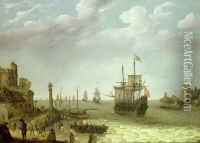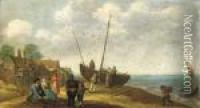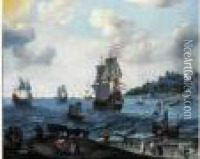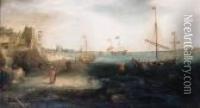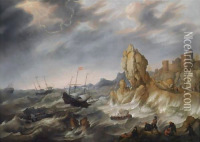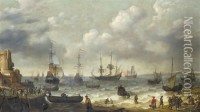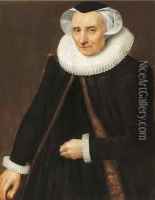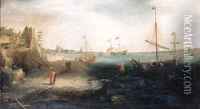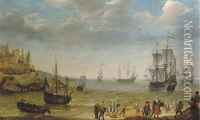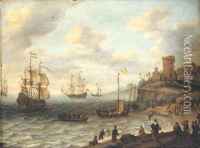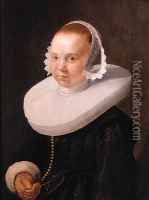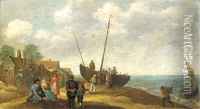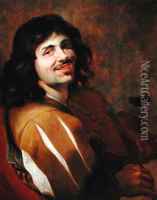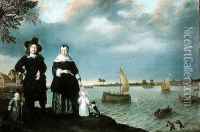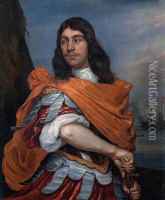Abraham Willaerts Paintings
Abraham Willaerts was a Dutch Golden Age painter known for his marine and historical scenes. Born in 1603 in Utrecht, Netherlands, he was part of a family of painters; his father was the painter Adam Willaerts, who also specialized in marine scenes.
Abraham initially received his training from his father and later possibly worked with Jan van Bijlert. He was influenced by the works of Jan van Goyen and Simon de Vlieger, which is evident in his use of color and composition in depicting maritime subjects.
Willaerts became a member of the Utrecht Guild of Saint Luke in 1626 and continued to be active in the artistic community there. Throughout his career, he produced a significant number of paintings, which were well regarded for their dynamic compositions and skillful representation of light and water. His works often captured naval battles, seaports, and scenes of Dutch maritime power, which was at its peak during the 17th century.
Despite the popularity of his marine paintings, Abraham Willaerts was also known for his historical and allegorical scenes. His narrative works displayed a keen attention to detail and a strong ability to convey human emotions through his figures.
Abraham Willaerts passed away in 1669, leaving behind a legacy that has been appreciated by art historians and collectors. His paintings are part of collections in various museums and art galleries around the world, which continue to celebrate the Dutch maritime tradition and the Golden Age of Dutch painting.
